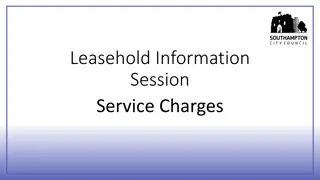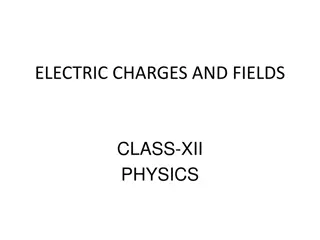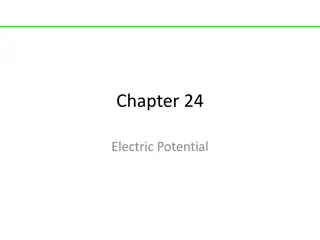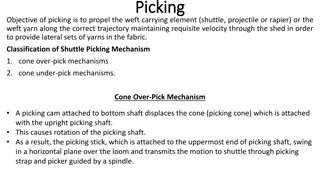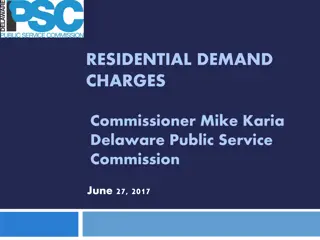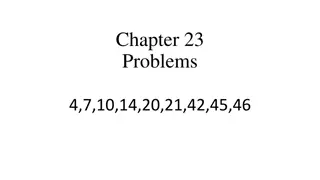Understanding the Impact of Dynamic Rates vs Demand Charges in Electric Shuttle Operations
SDAP, a shuttle service at San Diego Airport, faces challenges with demand charges after transitioning to battery electric vehicles. Their participation in Real-Time Pricing pilots reveals potential issues with capacity costs. This article explores the implications for fleets like SDAP and questions the impact of high market prices coupled with CPP event hours. Understanding these dynamics is crucial for optimizing electric shuttle operations and ensuring economic viability.
Download Presentation

Please find below an Image/Link to download the presentation.
The content on the website is provided AS IS for your information and personal use only. It may not be sold, licensed, or shared on other websites without obtaining consent from the author. Download presentation by click this link. If you encounter any issues during the download, it is possible that the publisher has removed the file from their server.
E N D
Presentation Transcript
Dynamic Rates vs Demand Charges Lisa McGhee San Diego Airport Parking October 15, 2019 Disclosure for Technical Rate Questions: Please send questions to: lisamcghee@aol.com
SDAP in Brief SDAP owns and operates a shuttle bus fleet serving the San Diego Airport and its customers, providing parking and shuttle service to and from the airport 24/7 and 365 days per year. We have been a SDG&E Small Commercial class customer since beginning business in 1991 and thereby had never exceeded 20 kW nor been exposed to any demand charges in our SDGE billings; After adopting Battery Electric Vehicles in 2015, SDAP was faced with Demand Charges for the first time. SDAP has operated over 100,000 electric fleet miles with plans to be 100% electric in 2020. However, due to low load factors and operational needs for peak charging, electric shuttle operations will not be economic if SDAP must incur demand charges.
SDAPs participation in RTP pilots SDAP was a party in the transportation Electrification SB350 Priority Review and Standard Review Pilot proceedings We are a site host for SDGE s Green Shuttle and the Power Your Drive pilot programs. -- includes two DCFC chargers at 60 kW and 10 Level-2 AC chargers. Both pilot programs are on the piloted real time pricing plans, with the Dynamic Day Ahead hourly rates.
CAISO Hourly VGI and Public GIR Pricing SDAP DR-02, Q1, 18-12-006, SDGE Response 6-7-19
SDAPs participation in RTP pilots(2) Both pilot programs are on the piloted real time pricing plans, with Dynamic Day Ahead hourly rates. This rate design consists of a flat volumetric base rate, plus CAISO day-ahead hourly market rates, combined with the CPP and D-CPP adder fees when events are triggered. These rates may be problematic for fleets like SDAP because the business may not have the flexibility to curtail on peak, due to operational needs and the limited range of the MHD electric vehicles.
Question for RTP Experts In 2018 the CAISO Day-Ahead hourly price exceeded 35 cents per kWh in 33 hours, with a maximum of $1.01 per kWh. If that hour had been a CPP event hour, would the super-position of a $1.01 market price and a CPP adder result in double- counting capacity costs?
AL-TOU-CPP is SDG&Es Standard M/L C&I Dynamic Rate AL-TOU-CPP features: A Critical Peak Pricing (CPP) rate; and A Base (T&D) rate consisting mostly of Monthly Demand Charges.
AL-TOU-CPP is Problematic The Two Halves of the AL-TOU-CPP Rate May Conflict: The CPP Rate is intended for Demand Response Non-Coincident Demand Charges support load flattening, and may work against demand response Monthly demand charges are problematic for Demand Response The Commission could consider: Avoiding Monthly Demand Charges in T&D Base Rates Volumetric TOU Base Rates could be the best pairing for dynamic and RTP commodity rates Alternatively, a Daily Coincident T&D Demand Charge could work well with dynamic rate and RTP.


![Read⚡ebook✔[PDF] Linking the Space Shuttle and Space Stations: Early Docking Te](/thumb/21519/read-ebook-pdf-linking-the-space-shuttle-and-space-stations-early-docking-te.jpg)
![[PDF⚡READ❤ONLINE] Energiya-Buran: The Soviet Space Shuttle (Springer Praxis Book](/thumb/21613/pdf-read-online-energiya-buran-the-soviet-space-shuttle-springer-praxis-book.jpg)
![Read⚡ebook✔[PDF] The Untold Stories of the Space Shuttle Program: Unfulfilled D](/thumb/21685/read-ebook-pdf-the-untold-stories-of-the-space-shuttle-program-unfulfilled-d.jpg)

